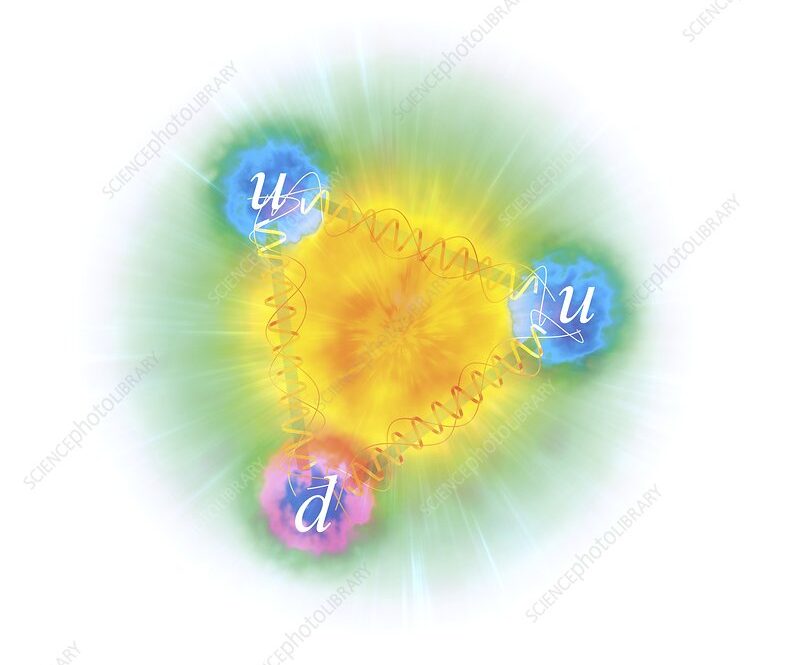Recent research has revealed groundbreaking insights into the complex internal structure of protons through the lens of quantum entanglement. An international team of scientists from Brookhaven National Laboratory, Stony Brook University, Universidad de las Américas Puebla, and the Institute of Nuclear Physics of the Polish Academy of Sciences has developed a universal model that explains how particles emerge from high-energy collisions.
The proton’s interior is a dynamic environment where quarks and gluons interact in a constantly shifting quantum sea. Traditional models describe protons as containing three valence quarks (two up and one down) held together by gluons. However, this new research demonstrates that these particles, collectively called partons, are quantum entangled at distances of approximately one quadrillionth of a meter. This entanglement is a collective feature affecting all partons within the proton.
To study the proton’s interior, scientists use deep inelastic collisions between electrons and protons. When an electron strikes a proton, the electromagnetic interaction is carried by a photon with sufficient energy to probe the proton’s internal structure. The collision can cause the proton to decay into numerous secondary particles. The key finding is that entanglement manifests in how the number of secondary particles emitted from the photon-interacting region determines the number of observed hadrons.
The researchers introduced entanglement entropy as a measure of quantum information in these interactions. Since the photon can only “see” part of the proton’s interior during collision, the entanglement entropy is nonzero, providing a useful metric for measuring entanglement within the proton. The team proved that entanglement entropy can predict the entropy of hadrons produced in electron-proton collisions.
Their theoretical framework has been validated against all variants of measurements from the H1 experiment conducted at the HERA particle accelerator (DESY, Hamburg) in 2006-2007, where protons collided with positrons. This marks the first time a single universal formalism has successfully described all experimental deep inelastic scattering entropy data.
The implications of this research extend beyond current experiments. The team anticipates that their generalized formalism will be crucial for interpreting measurements from future colliders, particularly the Electron-Ion Collider (EIC) scheduled to launch at Brookhaven Laboratory in the early 2030s. The EIC will enable collisions between electrons and both protons and ions, providing new opportunities to test and refine this theoretical approach.
The significance of this breakthrough lies in its potential to address fundamental questions in nuclear physics. The formalism’s success in explaining observed phenomena suggests it could help scientists better understand how strong interactions bind quarks and gluons in protons and how a proton’s properties are affected by its presence within larger atomic nuclei.
By incorporating quantum entanglement into their understanding of nuclear physics, scientists have opened a new path for investigating the fundamental nature of matter. This research represents a significant step forward in bridging quantum information theory with nuclear physics, potentially reshaping our understanding of particle interactions at the subatomic level. The framework’s ability to accurately predict and explain experimental results across different measurements suggests it has captured something fundamental about the nature of proton structure and particle interactions.
Reference: “QCD evolution of entanglement entropy” by Martin Hentschinski, Dmitri E Kharzeev, Krzysztof Kutak and Zhoudunming Tu, 2 December 2024, Reports on Progress in Physics. DOI: 10.1088/1361-6633/ad910b

